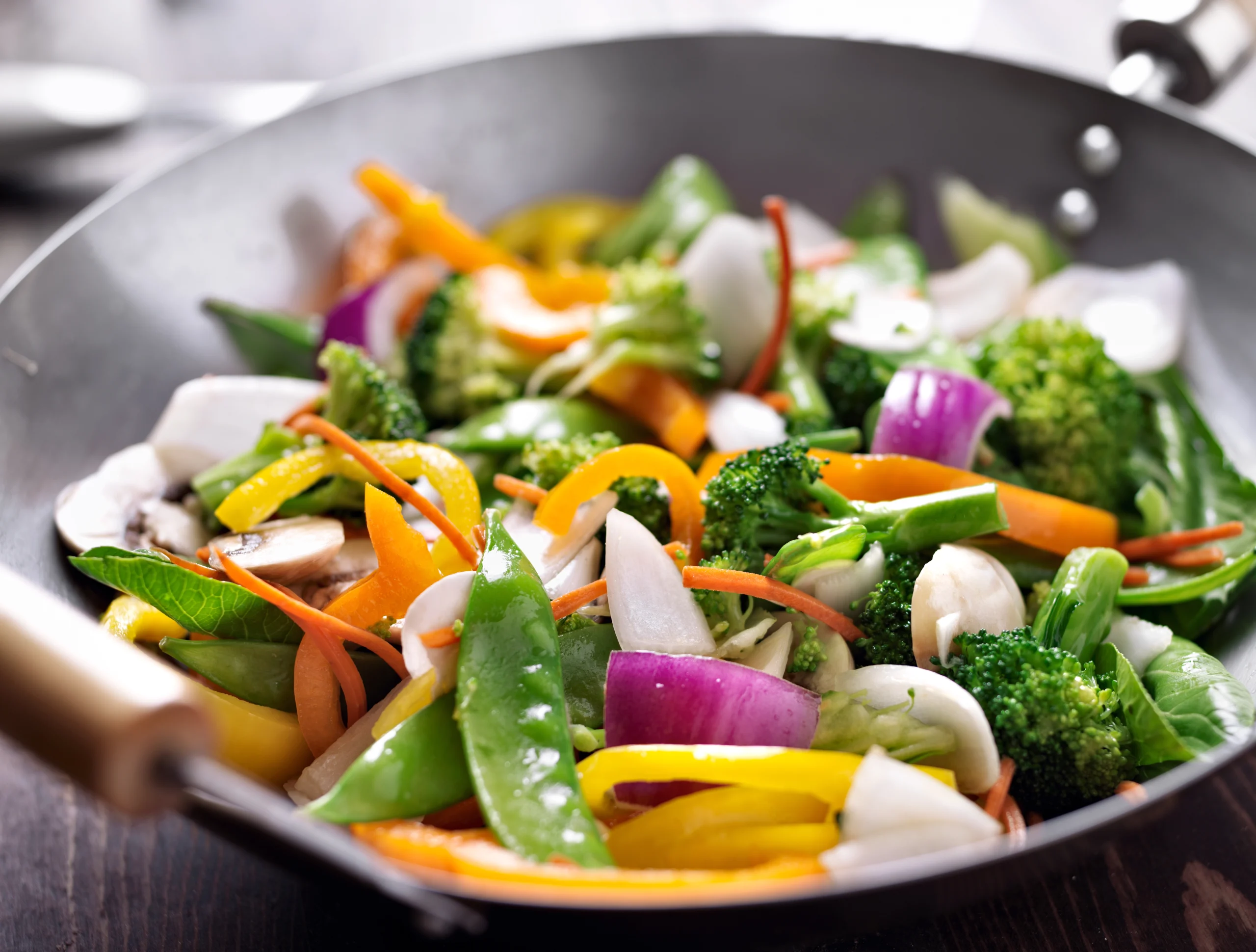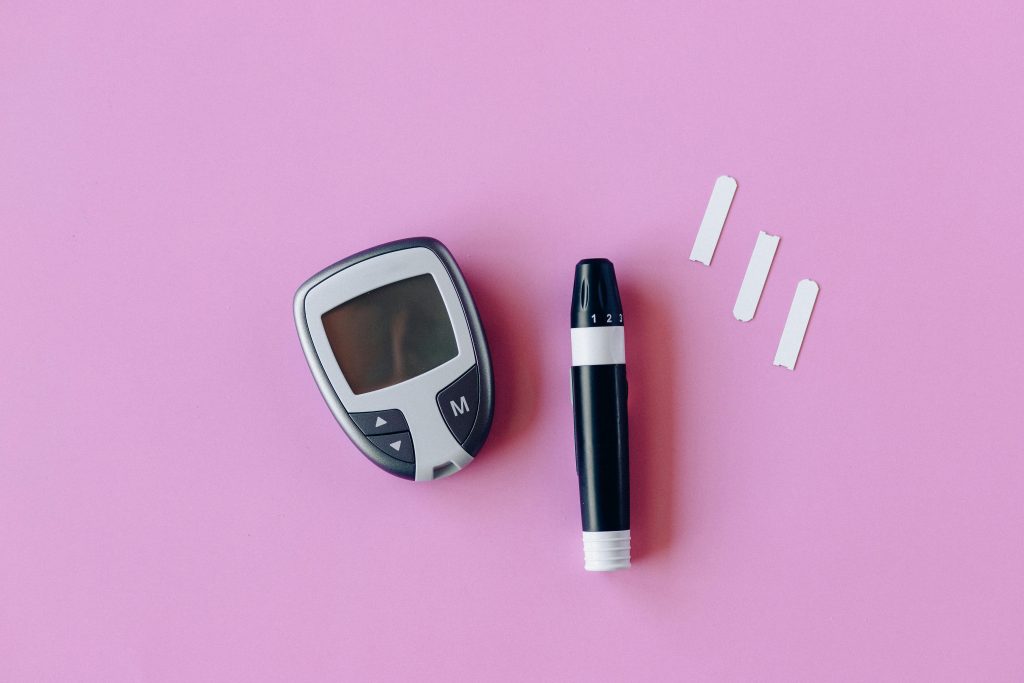Table Of Contents
-
Key Highlights
-
Why Diabetic Side Dishes Matter for Blood Sugar Control
-
20 Blood Sugar-Friendly Side Dishes with Complete Nutrition Guide
-
Interactive Diabetic Plate Calculator
- How to Build & Swap: Customizing Sides to Fit Your Needs
- The Plate Method & Pro Meal Planning for Diabetics
- Cultural & Holiday Diabetic Side Dishes
-
Frequently Asked Questions About Diabetic Side Dishes
-
Conclusion: Building Your Diabetes-Friendly Side Dish Repertoire
-
References and Sources
Key Highlights
- Evidence-based selections: All 20 dishes follow the latest ADA and CDC dietary guidelines for optimal blood sugar control
- Complete nutrition information: Each recipe includes fiber content, carb counts, and portion guidance for better meal planning
- Plate method integration: Visual portioning tips to help you build balanced, diabetes-friendly meals
- Global variety: Multicultural options that go beyond standard vegetables to keep your meals exciting
- Smart substitution guide: Learn how to transform family favorites into blood sugar-friendly alternatives
- Holiday-ready options: Festive sides that fit seamlessly into special occasion meals
- Interactive tools: Use our plate calculator to determine perfect portion sizes for your needs
Why Diabetic Side Dishes Matter for Blood Sugar Control
Side dishes play a critical role in diabetes management because they directly impact your blood sugar response throughout the meal. The right combination of fiber-rich vegetables, healthy fats, and controlled portions can slow glucose absorption and prevent dangerous spikes.
The Science Behind Blood Sugar-Friendly Sides
According to the CDC, filling half your plate with non-starchy vegetables provides only 2.5 grams of additional carbohydrates per serving while delivering essential nutrients and fiber. This approach, known as the plate method, helps maintain stable blood glucose levels by balancing macronutrients effectively.
Fiber-rich side dishes containing 8 grams or more of dietary fiber per meal are linked to improved post-meal blood sugar control. The soluble fiber found in beans, vegetables, and whole grains forms a gel-like substance that slows carbohydrate absorption, resulting in gentler glucose curves.
Key Nutritional Principles
Effective diabetic side dishes incorporate three essential elements: low glycemic index ingredients, adequate fiber content, and healthy fats. These components work synergistically to moderate blood sugar response while providing satisfying flavors and textures that make meals enjoyable.
 Important Note:
Important Note:
Always consult with your healthcare provider or registered dietitian before making significant changes to your diabetic meal plan. Individual carbohydrate needs vary based on medication, activity level, and personal health factors.
20 Blood Sugar-Friendly Side Dishes with Complete Nutrition Guide
Vegetable-Based Powerhouses
1. Mediterranean Roasted Cauliflower
Ingredients: 1 large head cauliflower, 2 tbsp olive oil, 1 tsp oregano, ½ tsp garlic powder, ¼ cup crumbled feta, 2 tbsp fresh parsley
Preparation: Cut cauliflower into florets, toss with olive oil and seasonings. Roast at 425°F for 25-30 minutes until golden. Top with feta and parsley.
Nutrition per serving (1 cup): 8g carbs, 4g fiber, 3g protein, 120 calories
Smart swap: Replace traditional mashed potatoes (30g carbs) with this lower-carb alternative
2. Asian-Inspired Green Bean Stir-Fry
Ingredients: 1 lb fresh green beans, 1 tbsp sesame oil, 2 cloves garlic, 1 tbsp ginger, 1 tbsp low-sodium soy sauce, 1 tsp sesame seeds
Preparation: Trim beans and stir-fry in sesame oil with garlic and ginger for 5-6 minutes. Add soy sauce and sesame seeds.
Nutrition per serving (1 cup): 9g carbs, 4g fiber, 2g protein, 80 calories
Glycemic impact: Very low – won’t spike blood sugar when paired with protein
3. Southwestern Black Bean Salad
Ingredients: 1 can black beans (rinsed), 1 cup corn kernels, 1 diced bell pepper, ¼ cup red onion, 2 tbsp lime juice, 1 tbsp olive oil, cilantro
Preparation: Combine all ingredients and let marinate for 30 minutes. Serve chilled or at room temperature.
Nutrition per serving (½ cup): 18g carbs, 6g fiber, 6g protein, 140 calories
Benefit: High protein and fiber content helps stabilize blood sugar response
4. Lemon Herb Roasted Brussels Sprouts
Ingredients: 1 lb Brussels sprouts (halved), 2 tbsp olive oil, 2 tbsp lemon juice, 1 tsp thyme, ¼ cup chopped walnuts
Preparation: Roast Brussels sprouts with olive oil at 400°F for 20-25 minutes. Drizzle with lemon juice, herbs, and nuts.
Nutrition per serving (¾ cup): 10g carbs, 5g fiber, 4g protein, 130 calories
Key benefit: Extremely high fiber content supports healthy digestion and glucose control
5. Italian Zucchini and Tomato Gratin
Ingredients: 2 medium zucchini (sliced), 2 large tomatoes (sliced), ¼ cup parmesan cheese, 1 tbsp olive oil, fresh basil, Italian seasoning
Preparation: Layer vegetables in baking dish, drizzle with oil, season, and top with cheese. Bake 25 minutes at 375°F.
Nutrition per serving (1 cup): 8g carbs, 3g fiber, 4g protein, 90 calories
Advantage: Very low in carbs while providing satisfying, cheese-enhanced flavor
Whole Grain & Complex Carb Options
6. Wild Rice Pilaf with Cranberries
Ingredients: ½ cup wild rice, 1 cup low-sodium broth, ¼ cup dried cranberries, ¼ cup chopped pecans, 1 tbsp olive oil, fresh herbs
Preparation: Cook wild rice in broth for 45 minutes. Stir in cranberries, nuts, and herbs. Drizzle with olive oil.
Nutrition per serving (½ cup): 22g carbs, 3g fiber, 4g protein, 160 calories
Portion note: Stick to ½ cup serving to maintain blood sugar control
7. Quinoa Tabbouleh
Ingredients: ½ cup cooked quinoa, 1 cup diced tomatoes, ½ cup cucumber, ¼ cup parsley, 2 tbsp lemon juice, 1 tbsp olive oil
Preparation: Mix cooled quinoa with vegetables and herbs. Dress with lemon juice and olive oil. Chill before serving.
Nutrition per serving (½ cup): 16g carbs, 3g fiber, 4g protein, 120 calories
Protein bonus: Quinoa provides complete amino acids unusual for plant foods
Creative Veggie Transformations
8. Cauliflower "Mac" and Cheese
Ingredients: 1 large head cauliflower, ½ cup unsweetened almond milk, ¾ cup reduced-fat sharp cheddar, 1 tbsp whole wheat flour, seasonings
Preparation: Steam cauliflower until tender. Make cheese sauce with milk, flour, and cheese. Combine and bake 15 minutes.
Nutrition per serving (1 cup): 12g carbs, 5g fiber, 8g protein, 140 calories
Comparison: Traditional mac and cheese contains 35g carbs per cup – this saves 23g carbs!
9. Spaghetti Squash Primavera
Ingredients: 1 medium spaghetti squash, 1 cup mixed vegetables (bell peppers, broccoli, carrots), 2 tbsp olive oil, garlic, Italian herbs
Preparation: Roast squash halves 40 minutes. Sauté vegetables with garlic and herbs. Combine with scraped squash strands.
Nutrition per serving (1 cup): 11g carbs, 3g fiber, 2g protein, 95 calories
Pasta replacement: Saves 32g carbs compared to regular pasta serving
10. Turnip and Carrot Mash
Ingredients: 2 cups turnips (cubed), 1 cup carrots (sliced), 2 tbsp butter, ¼ cup low-fat milk, salt, pepper, fresh chives
Preparation: Boil turnips and carrots until tender. Drain and mash with butter and milk. Season and garnish with chives.
Nutrition per serving (½ cup): 9g carbs, 3g fiber, 2g protein, 70 calories
Potato substitute: Contains 60% fewer carbs than mashed potatoes
Protein-Rich Bean & Legume Sides
11. Three-Bean Mediterranean Salad
Ingredients: ⅓ cup each kidney beans, chickpeas, and white beans (rinsed), ¼ cup red onion, 2 tbsp olive oil, 1 tbsp red wine vinegar, oregano
Preparation: Combine beans with diced onion. Whisk oil, vinegar, and oregano for dressing. Toss and chill 1 hour.
Nutrition per serving (½ cup): 20g carbs, 7g fiber, 7g protein, 170 calories
Fiber powerhouse: 7g fiber helps slow carbohydrate absorption significantly
12. Spiced Lentil and Vegetable Curry
Ingredients: ½ cup red lentils, 1 cup diced tomatoes, ½ cup spinach, 1 tsp curry powder, ½ tsp turmeric, 1 tbsp coconut oil
Preparation: Sauté spices in oil, add lentils and tomatoes with 1 cup water. Simmer 15 minutes, stir in spinach until wilted.
Nutrition per serving (½ cup): 18g carbs, 6g fiber, 8g protein, 150 calories
Anti-inflammatory: Turmeric and other spices provide additional health benefits
Fresh & Light Options
13. Cucumber Tomato Salad with Dill
Ingredients: 2 cucumbers (sliced), 2 tomatoes (chopped), ¼ cup red onion, 2 tbsp fresh dill, 1 tbsp olive oil, 1 tbsp vinegar
Preparation: Combine vegetables and dill. Whisk oil and vinegar, pour over salad. Let stand 15 minutes before serving.
Nutrition per serving (1 cup): 7g carbs, 2g fiber, 2g protein, 65 calories
Hydration bonus: High water content helps with satiety and blood sugar stability
14. Apple Slaw with Greek Yogurt Dressing
Ingredients: 2 cups shredded cabbage, 1 apple (julienned), ¼ cup plain Greek yogurt, 1 tbsp apple cider vinegar, 1 tsp honey, walnuts
Preparation: Mix cabbage and apple. Whisk yogurt, vinegar, and honey for dressing. Combine and top with nuts.
Nutrition per serving (¾ cup): 12g carbs, 3g fiber, 4g protein, 90 calories
Probiotic benefit: Greek yogurt supports digestive health and adds protein
15. Strawberry Spinach Salad
Ingredients: 4 cups baby spinach, 1 cup sliced strawberries, ¼ cup sliced almonds, 2 tbsp balsamic vinegar, 1 tbsp olive oil
Preparation: Combine spinach and strawberries. Whisk vinegar and oil for dressing. Toss gently and top with almonds.
Nutrition per serving (1 cup): 9g carbs, 3g fiber, 3g protein, 85 calories
Antioxidant rich: Strawberries and spinach provide vitamin C and folate
Comfort Food Makeovers
16. Loaded Cauliflower "Potato" Salad
Ingredients: 1 large head cauliflower (steamed), 2 hard-boiled eggs, ¼ cup Greek yogurt, 1 tbsp Dijon mustard, celery, green onions
Preparation: Steam and cool cauliflower florets. Mix with chopped eggs, vegetables, and yogurt-mustard dressing.
Nutrition per serving (½ cup): 6g carbs, 3g fiber, 5g protein, 75 calories
Carb savings: Traditional potato salad has 15g carbs per serving
17. Baked Sweet Potato Wedges
Ingredients: 2 medium sweet potatoes (cut in wedges), 1 tbsp olive oil, ½ tsp paprika, ¼ tsp garlic powder, salt, pepper
Preparation: Toss wedges with oil and seasonings. Bake at 425°F for 25-30 minutes, turning once, until crispy outside.
Nutrition per serving (3-4 wedges): 26g carbs, 4g fiber, 2g protein, 140 calories
Portion control: Limit to small serving and pair with protein to minimize blood sugar impact
International Flavors
18. Mexican Street Corn Salad (Esquites)
Ingredients: 2 cups corn kernels, 1 jalapeño (minced), ¼ cup cotija cheese, 2 tbsp lime juice, 1 tbsp Greek yogurt, chili powder
Preparation: Char corn in dry skillet. Mix with jalapeño, cheese, lime juice, yogurt, and spices. Serve warm or cold.
Nutrition per serving (½ cup): 16g carbs, 2g fiber, 4g protein, 110 calories
Moderation key: Corn is higher in carbs – balance with non-starchy vegetables
19. Indian Spiced Okra (Bhindi)
Ingredients: 1 lb okra (sliced), 1 onion (diced), 2 tbsp coconut oil, 1 tsp cumin seeds, ½ tsp turmeric, 1 tsp coriander
Preparation: Heat oil and cumin seeds. Add onion, then okra and spices. Cook 15-20 minutes until tender and lightly browned.
Nutrition per serving (¾ cup): 8g carbs, 4g fiber, 2g protein, 85 calories
Unique benefit: Okra contains compounds that may help regulate blood sugar
20. Southern-Style Collard Greens
Ingredients: 1 bunch collard greens (chopped), 1 tbsp olive oil, 1 onion (diced), 2 cloves garlic, 1 cup low-sodium broth, 1 tsp smoked paprika
Preparation: Sauté onion and garlic in oil. Add collards, broth, and seasonings. Simmer 30-45 minutes until tender.
Nutrition per serving (1 cup): 5g carbs, 4g fiber, 3g protein, 60 calories
Nutrient dense: Excellent source of vitamins A, C, and K with minimal carbs
Interactive Diabetic Plate Calculator
How to Build & Swap: Customizing Sides to Fit Your Needs
The Universal Swapping Framework
Transform any family favorite into a blood sugar-friendly option using these proven substitution strategies. The key is maintaining familiar flavors while reducing carbohydrate content and increasing fiber.
| Traditional Ingredient | Diabetic-Friendly Swap | Carb Savings | Preparation Tip |
|---|---|---|---|
| White potatoes (1 cup mashed) | Cauliflower mash | -20g carbs | Steam and drain thoroughly for best texture |
| White rice (½ cup cooked) | Cauliflower rice | -18g carbs | Sauté briefly to remove excess moisture |
| Regular pasta (½ cup) | Spaghetti squash | -16g carbs | Roast cut-side down for 40-45 minutes |
| Corn (½ cup) | Diced zucchini | -12g carbs | Lightly sauté to maintain crunch |
| Breadcrumbs (¼ cup) | Crushed pork rinds or nuts | -15g carbs | Process until fine for best coating |
Flavor Enhancement Without Carbs
Successful diabetic side dishes rely on bold seasonings, healthy fats, and texture variety. Use herbs, spices, citrus, and quality oils to create satisfying dishes that don’t depend on starchy ingredients for appeal.
- Herb combinations: Fresh herbs like basil, cilantro, and dill add brightness without carbs
- Acid balance: Lemon juice, vinegars, and tomatoes enhance flavors naturally
- Healthy fats: Olive oil, avocado, nuts, and seeds provide satiety and flavor
- Umami boosters: Mushrooms, aged cheeses, and fermented ingredients add depth
- Texture contrast: Combine soft and crunchy elements for more satisfying dishes
Allergy-Friendly Modifications
Common food allergies don’t have to limit your diabetic side dish options. These modifications maintain blood sugar benefits while accommodating dietary restrictions.
Dairy-Free Options
Replace cheese with nutritional yeast, use coconut milk in creamy dishes, and try cashew-based sauces for richness without dairy.
Gluten-Free Swaps
Use almond flour for breading, cauliflower for grain sides, and certified gluten-free seasonings in all preparations.
Nut-Free Alternatives
Substitute seeds (sunflower, pumpkin) for nuts, use coconut flakes for crunch, and try seed butters in dressings.
The Plate Method & Pro Meal Planning for Diabetics
Visual Portioning Made Simple
The plate method, endorsed by the American Diabetes Association, provides an easy visual guide for creating balanced meals without measuring every ingredient. This approach ensures proper portions while maintaining variety and satisfaction.
For optimal blood sugar control, fill your 9-inch plate as follows: half with non-starchy vegetables, one-quarter with lean protein, and one-quarter with starchy carbohydrates or whole grains. This ratio provides natural portion control and balanced nutrition.
Sample Balanced Plates
Mediterranean Plate
Vegetables: Roasted cauliflower, cucumber tomato salad
Protein: Grilled chicken
Starch: Small portion quinoa tabbouleh
American Comfort Plate
Vegetables: Green bean stir-fry, loaded cauliflower salad
Protein: Lean pork tenderloin
Starch: Baked sweet potato wedges
Latin-Inspired Plate
Vegetables: Mexican street corn salad, sautéed zucchini
Protein: Grilled fish
Starch: Black bean and corn salad
Weekly Meal Planning Strategy
Successful diabetes management requires consistent meal planning. Prepare 2-3 diabetic side dishes in advance each week, focusing on different vegetable types and preparation methods to maintain variety.
- Prep day approach: Wash and chop all vegetables on Sunday for quick weekday cooking
- Batch cooking: Make large batches of roasted vegetables and grain salads
- Mix and match: Prepare components that work with multiple main dishes
- Seasonal rotation: Plan sides around available produce for best flavor and nutrition
- Emergency options: Keep frozen vegetables and canned beans for quick, healthy sides
Cultural & Holiday Diabetic Side Dishes
Holiday Celebrations Without Blood Sugar Spikes
Special occasions don’t require abandoning your diabetes management goals. These culturally-inspired and holiday-appropriate sides maintain traditional flavors while supporting stable blood glucose levels.
Thanksgiving & Fall Celebrations
- Cauliflower stuffing: Replace bread with seasoned cauliflower, celery, and herbs
- Mashed turnip and parsnip: Creamy, lower-carb alternative to mashed potatoes
- Green bean almandine: Fresh beans with sliced almonds and lemon
- Roasted Brussels sprouts with bacon: Crispy vegetables with smoky flavor
International Holiday Traditions
Mexican/Latin Sides
- Jicama slaw with lime
- Roasted poblano strips
- Cilantro-lime cauliflower rice
- Chayote squash with onions
Asian-Inspired Options
- Shiitake mushroom stir-fry
- Sesame bok choy
- Cucumber kimchi (low-sugar)
- Miso-glazed eggplant
Mediterranean Classics
- Greek village salad (horiatiki)
- Lemon-herb roasted vegetables
- Stuffed tomatoes with herbs
- Grilled zucchini with feta
Kid-Friendly Diabetic Sides
Children with diabetes need appealing, familiar flavors in their side dishes. These options satisfy young palates while supporting healthy blood sugar levels for the whole family.
- Cheese-topped broccoli trees: Steam broccoli and top with melted cheese
- Rainbow veggie kabobs: Thread colorful vegetables on skewers for fun eating
- Sweet potato “fries”: Baked wedges with kid-friendly seasonings
- Veggie “ants on a log”: Celery with almond butter and sugar-free raisins
- Mini bell pepper “boats”: Stuffed with herbed cream cheese
Frequently Asked Questions About Diabetic Side Dishes
Non-starchy vegetables are ideal for diabetic side dishes because they contain minimal carbohydrates while providing essential nutrients and fiber. Best choices include broccoli, cauliflower, green beans, Brussels sprouts, zucchini, bell peppers, and leafy greens. These vegetables typically contain 5 grams of carbs or less per cup and can be eaten in generous portions without significantly impacting blood sugar levels.
Potatoes can be included in diabetic meal plans, but portion control is crucial. Limit servings to ½ cup of mashed or 1 small baked potato (about the size of a computer mouse). Always pair potatoes with protein and fiber-rich foods to slow glucose absorption. Better alternatives include cauliflower mash, turnip and carrot mash, or roasted winter squash, which provide similar satisfaction with fewer carbohydrates.
Holiday-friendly diabetic sides include roasted Brussels sprouts with bacon, green bean almandine, cauliflower stuffing, and mashed turnips with herbs. These dishes maintain festive appeal while supporting blood sugar control. For international celebrations, try Mexican jicama slaw, Asian sesame bok choy, or Greek roasted vegetables with feta. Prepare these sides in colorful presentations to enhance holiday table appeal.
Transform comfort food sides using strategic substitutions: replace potatoes with cauliflower, use Greek yogurt instead of sour cream, swap white rice for cauliflower rice, and substitute whole wheat flour for white flour in casseroles. Add extra vegetables to traditional recipes, use herbs and spices for flavor instead of excessive salt or sugar, and incorporate healthy fats like olive oil. These modifications maintain familiar tastes while reducing carbohydrate content.
Yes, beans are excellent diabetic side dishes due to their high fiber and protein content, which helps stabilize blood sugar levels. A ½-cup serving of beans provides 6-8 grams of fiber and 6-8 grams of protein. Choose kidney beans, black beans, chickpeas, or white beans in salads or as warm sides. Always rinse canned beans to reduce sodium content, and pair with non-starchy vegetables for optimal blood sugar control.
Use the plate method for easy portioning: fill half your 9-inch plate with non-starchy vegetables, one-quarter with lean protein, and one-quarter with starchy sides or whole grains. For side dishes specifically, aim for 1 cup of non-starchy vegetables, ½ cup of starchy vegetables or grains, and ½ cup of bean-based sides. Visual cues help: a serving of starchy sides should be about the size of your fist, while non-starchy vegetables can fill your cupped hands.
Picky eaters respond well to familiar flavors in new forms. Try cauliflower “mac” and cheese, sweet potato “fries” (baked wedges), cheese-topped steamed broccoli, or rainbow vegetable kabobs. Hide vegetables in familiar dishes like meatballs or casseroles. Start with small portions of new foods alongside accepted favorites, and involve picky eaters in food preparation to increase acceptance. Dips like hummus or Greek yogurt-based dressings can make vegetables more appealing.
Fresh fruit can be incorporated as diabetic side dishes in controlled portions. Choose whole fruits over juices or dried fruits, and limit servings to ½ cup of fresh berries, 1 small apple, or ¾ cup of melon. Berries are particularly good choices due to their high fiber and lower sugar content. Pair fruit with protein or healthy fats to slow glucose absorption. Consider fruit as part of salads, like strawberries in spinach salad or apples in coleslaw, to balance the carbohydrate content.
Reduce carbs in favorite sides by substituting high-carb ingredients with lower-carb alternatives. Replace pasta with spaghetti squash or zucchini noodles, use cauliflower instead of rice or potatoes, and add more non-starchy vegetables to grain-based dishes. Reduce portion sizes of starchy components while increasing vegetables, herbs, and spices. For example, in a rice pilaf, use ¼ cup rice mixed with 1 cup diced vegetables instead of ½ cup rice alone.
Many international cuisines offer naturally diabetes-friendly sides. Mediterranean options include Greek village salad, roasted vegetables with olive oil, and herbs. Asian dishes like sesame bok choy, cucumber kimchi (low-sugar version), and shiitake mushroom stir-fries work well. Latin American sides include jicama slaw with lime, roasted poblano strips, and chayote squash with onions. Indian spiced okra, Middle Eastern tabbouleh (with more vegetables than grain), and African vegetable stews provide flavorful, blood sugar-friendly options.
Conclusion: Building Your Diabetes-Friendly Side Dish Repertoire
Creating satisfying, blood sugar-friendly side dishes doesn’t require sacrificing flavor or cultural traditions. With these 20 expertly-curated recipes and strategic substitution techniques, you can transform any meal into a diabetes-supportive feast that the whole family will enjoy.
Remember that successful diabetes management combines proper portion control, regular blood sugar monitoring, and consistent meal planning. These side dishes provide the foundation for balanced plates that support stable glucose levels while delivering the nutrients your body needs to thrive.
Start by incorporating 2-3 new diabetic side dishes into your weekly meal rotation. Use the plate method for easy portioning, experiment with different cultural flavors, and don’t be afraid to modify family favorites using the substitution guidelines provided. Your taste buds—and your blood sugar levels—will thank you.
Ready to transform your meals? Begin with the Mediterranean Roasted Cauliflower or Asian-Inspired Green Bean Stir-Fry this week, and share your success with family and friends who can benefit from these healthy, delicious options.
References and Sources
- OSU Extension Dining with Diabetes Side Dishes PDF (2024) – Comprehensive resource for blood sugar-friendly side recipes with scientific backing
- CDC Tasty Recipes for People with Diabetes – Authoritative, guideline-based resource with printable recipes
- Children’s Hospital of Pittsburgh Diabetic Side Dishes – Peer-reviewed, family-tested recipes for diabetic meal planning
- Harvard Health Publishing – Southern Side Dishes – Medical expertise with cultural context and healthy substitutions
- CDC: Diabetes and Meal Planning – Official plate method illustrations and authoritative guidance
- Clemson Extension: Choose Diabetes-Friendly Foods – Practical advice on substitutions and meal planning
- CDC: Diabetes and Cultural Foods – Guidelines for incorporating global cuisines into diabetic meal plans
- Michigan Medicine: Diabetic Cooking Substitutions – Evidence-based ingredient swaps for healthier cooking
- Harvard Health: Blood Sugar-Friendly Fruits – Scientific guidance on incorporating fruits into diabetic diets
- Dining with Diabetes Program Sites – Community-tested recipes from registered dietitians and diabetes educators
- American Diabetes Association. (2024). Standards of Medical Care in Diabetes. Diabetes Care, 47(Supplement_1), S1-S321.
- Academy of Nutrition and Dietetics. (2023). Nutrition Care Manual: Diabetes Management Guidelines.
Disclaimer:
The information provided on MD-Pilot is for educational and informational purposes only. It is not intended as a substitute for professional medical advice, diagnosis, or treatment. Always seek the advice of your physician or other qualified healthcare provider with any questions you may have regarding a medical condition. Never disregard professional medical advice or delay in seeking it because of something you have read on this website.
Recomended Articles
View AllWeekly Health Intel
Get evidence-based health tips, latest research, and exclusive guides delivered weekly




